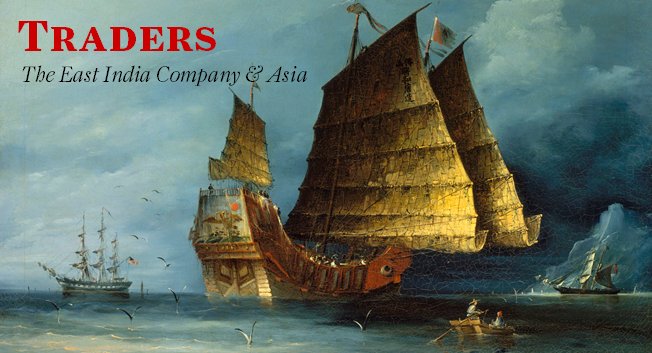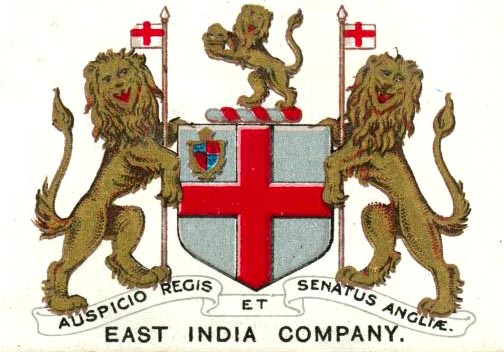- Home
- History of India
- East India Company
East India Company---British rule
Updated on 3-09-2023.
Introduction:
The East India Company officially known as Governor and Company of Merchants of London trading into East Indies, was an English company formed for the purpose of trading.
with the East Indies (the Indian subcontinent and Southeast Asia) during the 17th and 18th centuries. It mainly traded in cotton, indigo dye, silk, salt, opium and tea. The original Royal Charter was given to “George, Earl of Cumberland, and 215 Knights, Aldermen, and Burgesses”. The charter gave the company a monopoly to trade with all countries east of the Cape of Good Hope and west of the Straits of Magellan for an initial period of 15 years.
East India company entered India in the year 1600. However, trade route from Europe to India was started way back in 1498 when Vasco da Gama discovered sea route to India. Vasco da Gama landed in Calicut and took small spices to Europe for trade. When it sold like a hot cake in Europe, Portuguese realized the importance of trading in India and started to do trade with India.
Portuguese realised that India has lot of spices and is very good and easy place for trading. But it was short lived when British in 1600 under the guidance of Queen Elizabeth gave permission to do trading in Indian subcontinent. East India Company or also known as English east India Company was issued a charter in the year 1600 to start doing trade in the subcontinent. It was formed mainly to do trading in the East Indies but ended up mainly in Indian sub continent.
Over the years, the East India Company expanded its trading operations in the Indian subcontinent and Southeast Asia. It faced competition from other European powers, particularly the Dutch and the Portuguese, who were also vying for control of the lucrative spice trade and other valuable commodities.
Colonial Ambitions: As the East India Company's influence grew in India, it began to establish trading posts and factories along the coast. These settlements eventually evolved into territorial acquisitions and formed the basis for British colonial rule in India.
British Control: By the mid-18th century, the East India Company effectively controlled large parts of India. It played a significant role in shaping British India's administrative, economic, and political structures.
End of the Company: The 19th century saw various reforms and changes in the governance in India. there was lot of fight by the Indians against British to quit India. Following the Indian Mutiny of 1857-1858, the British government passed the Government of India Act in 1858, which effectively ended the rule of the East India Company and transferred control of India to the British Crown. The British Raj was established, and India became a formal part of the British Empire.
Details of East India Company
On 31st
December 1600 a group of traders called as East India Company got the monopoly
from the queen to trade in East Indies. The company which started as a trading
company started to rule India for many decades. The charter awarded the
companies to trade with east for 15 years; however, it said that if any breach
by the company would get punishment of forfeiture of ship and cancellation of
licence to trade. The first ship for trade which started its journey in 1601
had a terrible experience. It was travelling to Indonesia for trade in pepper
and other spices. Out of 500 people on board many died and only a handful of
merchants were able to reach Indonesia.
By the time British reached India, both Portuguese and Dutch had a commanding position in doing trade with India. But however British defeated Portuguese in the battle of swally in the year 1612 and started the first trading centre at Surat. In the year 1612, Sir Thomas Roe visited the Mughal emperor Jahangir and got an exclusive rights to trade and establish factories in Surat and nearby areas. The company traded mainly in Indian textiles, indigo, saltpetre(a substance used in making gunpowder) and some spices such as cinannamon, pepper, cloves etc. the company first established its factories in Surat on West coast and Machlilpatanam on East coast .
In return gesture company offered to get goods from Europe to the King. This was an important milestone for the East India Company. Gradually British started to expand and many trading posts were established in Madras (now Chennai), Bombay (now Mumbai), and Calcutta (now Kolkata). The company slowly started to trade in Cotton, Indigo and other spices which were in huge demand in Europe. In the first few decades company firmly established it foot in trading in India.
In the beginning Surat remained the headquarters until it was replaced to Bombay between 1672-1684. Charles 2 transferred Bombay to east India company for a mere rent of annually 10 $. Slowly Bombay was made the headquarters replacing Surat. In the year 1640 the first fort called as fort St George was built by the British in Madras. The fort further expanded the trading activity of British.
Trading during East India Company

In the year 1651 British set up a factory in Hugli (currently Howrah) to do trade in Bengal. Later in the year 1690, British converted the factory into fort and named it as fort William. Soon after this the company got permission to collect revenue from two villages called as Gobindapur and Kalikata. Trade in Bengal fetched huge profit to the company. The company then obtained the right to do duty free trade in Bengal, this led to misuse of rights by many traders. This led to huge loss to Nawab of Bengal who became hostile to company.
The trading prospered in India, this made the traders to establish sprawling business in British. Due to huge pressure from the traders in England the company issued a regulating act in the year 1694, which allowed any one to come and do trade in India. Slowly a rival company was established. Due to stiff competition between the two companies, the east India Company decided to merge both the companies in the year 1708. The merged company got its own set of rules. The new company consisted of 24 directors who were appointed annually. Cotton being in huge demand was the main export from India. London was an important trading centre. Silver was used for exchange of goods, but however the traders demanded to export the goods manufactured in British.
With the death of Aurangzeb the Mughal empire began to decline. The war for the power by Marathas, Sikh and other rulers gave British gave an opportunity to engineer a split among these kings while gaining more power in the process. Slowly British who came to India just as traders started to join the politics of India. They started to divide India and took control province by provinces. This led to revolt by the Indians. Hence the administration and control of India went directly under the control of Queen. Battle of Plassey in 1757 decisively gave more power to British. Revolt of 1857 was the game changer for East India company.
East India Company in India
Update on coronavirus in India
The East India Company had a profound and huge impact on India during its presence in the Indian subcontinent. Some of the important aspects of the East India Company's influence and activities in India:
- Establishment of Trading Posts: The East India Company initially established trading posts along the coast of India in places like Surat, Madras (Chennai), Calicut (Kozhikode), and Bombay (Mumbai). These posts served as bases for conducting trade with Indian merchants and European rivals.
- Monopoly and Expansion: The company's success led to the acquisition of more territory and the establishment of additional trading posts and factories across India. Over time, it gained a near-monopoly on trade with India, particularly in valuable commodities like textiles, spices, indigo, and opium.
- Conflict with Rivals: The East India Company faced competition and conflicts with other European colonial powers in India, including the Dutch, Portuguese, and French. The struggle for control of Indian trade routes and resources often led to armed conflicts.
- Bengal and the Battle of Plassey (1757): One of the most significant events in the company's history in India was the Battle of Plassey in 1757. The company's forces, led by Robert Clive, defeated the Nawab of Bengal, Siraj-ud-Daulah, establishing the company's dominance in Bengal. This battle marked the beginning of the company's territorial acquisitions in India.
- Territorial Expansion: The company continued to expand its control over various regions of India through alliances, treaties, and military campaigns. This led to the acquisition of territories in Bengal, Madras, and Bombay. By the early 19th century, the company controlled large parts of India.
- Revolt of 1857: The Indian Rebellion of 1857, also known as the Indian Mutiny or the Sepoy Mutiny, marked a significant turning point. It was a widespread uprising against British rule, and while it failed, it prompted the British government to take direct control of India from the East India Company.
- End of the Company's Rule: In 1858, the British government passed the Government of India Act, transferring control of India from the East India Company to the British Crown. This marked the formal end of the company's rule in India and the beginning of the British Raj.
Affiliate Disclosure:
If you make any purchase via a link on this site, I may receive a small commission with no added cost to you.



